
All categories
Featured selections
Trade Assurance
Buyer Central
Help Center
Get the app
Become a supplier

(108 products available)

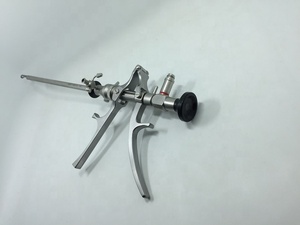
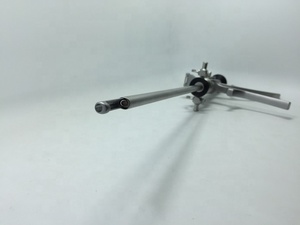
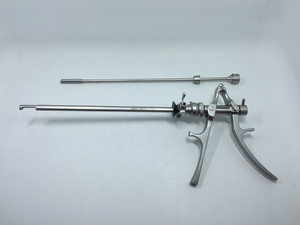
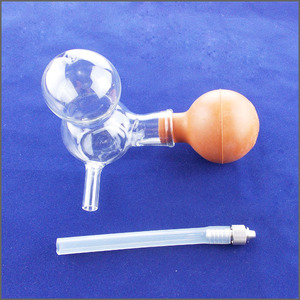
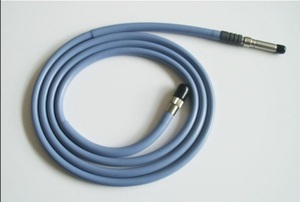





































Many bladder instrument sets provide every possible treatment for the urinary system.
A cystoscope is an instrument that allows doctors to examine the inside of a patient's bladder and urinary tract using a thin tube with a small camera attached that projects live images onto a screen. This tool is mainly used to diagnose and evaluate abnormalities, infections, or cancers in the bladder lining and urethra. Medical equipment suppliers and manufacturers usually provide cystoscope instrument sets with all the necessary tools, including scopes, biopsy forceps, tissue grabbers, and irrigators for washing the area during the examination. The variety of options allows buyers in the medical sector to select and order sets that suit their clientele's various needs, including pediatric and adult.
Urologists perform bladder and urinary system surgeries with tools from a bladder kit designed for patients with urinary tract infections or other diseases. The common tools in a cystoscopy kit for urologists include:
This instrument set is employed during urodynamics tests to examine how the bladder functions. Instruments in the kit include a pressure catheter to evaluate the pressure inside the bladder and urethra while it is filled and drained. It also has bladder and sphincter pressure transducers to measure and document bladder pressure, irrigation of the bladder and addition of fluid, cystometric fill set, and urine collection containers. An expandable balloon is inserted through the urethra during the post-procedure survey or voiding study, which helps assess the urethral opening and closure.
Suppliers should consider the following features when sourcing bladder instruments:
Most bladder instruments feature stainless steel blades that are not easily repairable or replaceable due to their hardness and edge strength. Other blades are manufactured from tungsten carbide, with wire edges for maximum cutting power. These blades are fitted into resectoscopes to cut protrusions in the bladder during surgery. Bladder instruments are also manufactured with long-lasting rust-resistant properties since they will be frequently sterilized. Examples of tools with high-strength steel blades are:
Irrigation and infusion syringes are typically composed of high-strength plastic materials like polycarbonate. Other industrial-grade materials, like stainless steel and aluminum, construct the syringe plunger for strength and tight fit to prevent fluid leakage. The nozzle attaching to cystoscopes is sturdy, with minimal internal resistance, allowing easy fluid transfer for irrigation or infusion. To avoid contaminating the sterile space, the syringe is designed with a universal Luer lock compatible with most medical tubing, ensuring a stable connection that will not come loose during usage. Moreover, a transparent barrel on the syringe enables visual monitoring of fluid levels. This allows doctors to balance fluid levels in the bladder throughout the irrigation or infusion procedure.
Other common components of bladder instruments apart from blade resectors include forceps, scissors, endoscopes, rectocutures, and electrical machines like electrocautery and bladder washers. These parts are often made of stainless steel due to its non-corrosive, anti-rusting, and solid cutting-edge retention qualities, making it ideal for long-term use after sterilization. Some parts have carbide inserts for maximum wear resistance. The steel composition allows for flexible but solid hinges that endure many cycles of opening and clamping without becoming loose or breaking. Moreover, the rigidity of stainless steel instruments ensures precise procedures by providing steady fine tools within the surgeon's grasp without bending under force. Also, to avoid patient bladder damage, these instruments are designed with blunt tips and a solid feel to limit puncture risk.
Bladder instruments are utilized to resect tumors within the bladder during transurethral resection of bladder tumors (TURBT) surgery. Bladder instruments like the resectoscope have excision blades, and other tools like bladder forceps are introduced through the urethra to cut out tumor tissue, which is later analyzed through pathology. Irrigation syringes flush the area to clear debris and blood during the surgery.
People with abnormal bladder findings from urine tests are subjected to bladder biopsy procedures using special tools. The cystoscope is inserted into the bladder and fitted with forceps to remove tissue samples for examination. Other biopsy tools include the electric cautery or laser, which burns off tumors during bladder tumor surgery. After sampling, the bleeding is controlled using coagulation forceps.
Patients with obstruction are advised to undergo transurethral prostate resection (TURP) surgery to remove excess prostate tissue that constricts the urethra and obstructs urine passage. Bladder instruments used during this procedure include the resectoscope, which excises obstructive tissues, and irrigation syringes that wash away cut pieces and blood clots from the bladder. The remaining debris is then suctioned using a suction catheter.
A cystoscope is used to probe the urinary tract and bladder for cancer and infection. While probing, bladder tools like biopsy forceps are used to take suspicious areas for laboratory examination. Other tools like the electric cautery are used to burn irrelevant tissues or tumors while the bladder patient is under local or general anesthesia. Urodynamic tests measure bladder functions by inserting catheters and pressure sensors to evaluate bladder filling and emptying dynamics. The bladder tools listed above are vital in diagnosing and managing various bladder and urinary tract diseases.
Patients requiring bladder surgery undergo cystoscopy and urodynamics tests to evaluate their bladder status. The Cystoscope identifies abnormalities like tumors and takes biopsies using attached forceps. Urodynamic tests evaluate bladder capacity and pressure by inserting pressure sensors through the urethra. These tests give essential data for bladder cancer treatment, which is then guided by test results, and the doctor may recommend medication, radiation therapy, or surgery, depending on the extent of bladder cancer.
Medical practitioners and hospital procurement officers can consider the following factors when purchasing bladder instrument sets:
Hospital decision-makers analyze patient medical records and past urine tests to establish the bladder instruments required and how frequently they are purchased. This will help them purchase the cystoscope sets and urodynamic and urinalysis bladder kits needed at a given time.
Industry professionals who intend to use bladder instruments frequently should consider reasonably strong ones. They also look for tools like electric resectoscopes made of stronger steel or stainless steel alloys for better durability. They also think about the wear and tear of moving elements such as clamps, forceps, and retractors. Items with longer lifecycles lessen the frequent need for replacements, hence less operational disruption.
To enhance operational efficiency and patient safety, healthcare practitioners examine the ergonomics of the bladder instruments they intend to purchase. They look for repairable or replaceable parts for the cystoscopes, irrigation sets, and other tools to enable worry-free usage. Only intrument sets with good gripping handles and smooth working jaws are ideal because they increase ease when giving precise manipulations. Kits that include pullers, cutters, and manipulators like retractors make the instrument more practical for various surgeries.
Instruments and kits are required to be compatible with existing medical systems and equipment. Hospital administrators check compatibility factors with their resident cystoscopes, bladder washers, electro cauterys, and other manufactured equipment. They also consider the compatibility between the tools and the typical sterilization instruments such as autoclave machines. To achieve maximum efficiency and minimal technical support, various products are more compatible with particular hardware or software.
Individuals and organizations analyze the cleanliness and care required for bladder instruments. They evaluate how fast and easily the equipment can be sterilized, as cleanliness is critical in this business. Bladder instruments made of materials that can survive high-temperature autoclaving and sterilizing chemicals are preferred. Furthermore, sets with fewer interrelated parts or components that can be quickly detached, cleaned, and replaced are preferred to reduce downtime and enhance practicality in high-traffic hospital settings.
A1. The bladder instrument set comprises forcipes, scissors, endoscopes, rectoscopes, electric resectoscopes, electrocautery, and bladder washers.
A2. Buyers should consider the following factors when choosing a bladder instrument set:
A3. The common types of bladder instrument sets are: